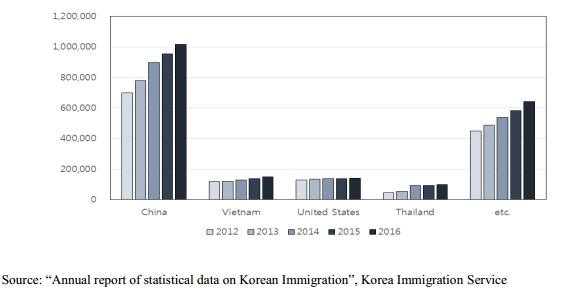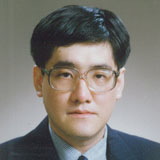Introduction
South Korea is enhancing its defense capabilities to deter the growing North Korean nuclear and missile threat. The South Korean government announced this year that it will increase its defense budget to 43 trillion won ($40 billion), which is a 7% increase from 2017. The government also stated that much of this expansion will be focused on strengthening “the three axis defense platform.”1 However, these measures only focus on improving South Korea’s military capabilities. In order to fully mitigate the North Korean threat, South Korea also needs to focus on developing its civil defense. Incidentally, the Ministry of the Interior and Safety (MOIS) has announced that it will increase the number of civil defense training this year, but concrete discussions about the efficacy of civil defense are lacking.
This is especially critical given that any extreme provocation by North Korea directed at a densely populated area such as Seoul would be catastrophic. General Joseph Dunford of the U.S. Joint Chiefs of Staff stated at the Aspen Security Forum that a conflict on the Korean Peninsula would “…be a loss of life unlike any we have experienced in our lifetimes.”2 According to a report released by the Congressional Research Service (CRS), North Korean artilleries along the demilitarized zone (DMZ) could unleash approximately 10,000 rounds per minute towards Seoul. The report estimates a death toll in the range of 30,000 to 300,000 during the initial stage of conflict.3
One way to minimize a costly fallout is by strengthening civil defense.4,5But how prepared is South Korean civil defense? This brief attempts to provide a first cut assessment by considering the capacity and adequacy of South Korea’s civil defense evacuation facilities. The findings show that there is a significant lack of space to accommodate the South Korean population and recommends that the government consider increasing investment on more and better equipped facilities.
South Korean Civil Defense Evacuation Facilities
The Korea Research Institute for National Strategy released a report in October 2016 recommending that the government review the adequacy and efficiency of the evacuation facilities in South Korea.6 We attempt to follow through with this recommendation by comparing the information on location and size of these facilities made available by the MOIS7 with data on the South Korean population provided by the Korean Statistical Information Service (KOSIS).8To assess the availability of evacuation shelters, we utilize two standards as outlined by the South Korean government. The short-term standard requires that at least 0.825 m2 of shelter space is made available for up to 10 hours for one person. The long-term standard requires that each person be allowed 1.43 m2 of shelter space for up to 2~3 days. Table 1 shows the number of people who would not be covered by either of these standards in major cities and provinces.
Table 1. Number of Civilians Not Able to Access an Evacuation Facility Under Official Occupant Density Standards
According to our estimates, there is a shortage of evacuation facilities in the event of both short and long-term crises as defined by the South Korean government. The extent of this shortage is especially acute for long-term emergency. Under the existing standards, over 1.8 million civilians (3.5% of total population) will be crowded out of evacuation facilities for short-term use while more than 6.5 million people (12.7% of total population) will not be able to take shelter for 2~3 days.
Figure 1. Percentage of Civilians without Shelter by City, County, and District
Figure 1 shows a more fine-grained analysis of the shortage at the city, county, and district levels. Of the 229 cities, counties, and districts in South Korea, 81 fail to provide enough facilities to accommodate its citizens on a short-term basis while 146 do not have enough facilities for long-term use. To address this shortage, the government will need to provide an additional 1.5 ~ 9.34 km2 worth of shelter space spread out across different parts of South Korea.
The lack of adequate shelter space is even more pronounced when we compare South Korea’s occupancy standard to that of other countries. As shown in Table 2, the minimum space requirement for single person occupancy is higher in all other countries except for Finland on a short-term basis. The data also suggests that South Korea’s evacuation shelters are ill-suited for long-term evacuations.
Table 2. Space Required for Single Occupancy by Country (Unit:㎡ per person)
Figures 2 and 3 show the percentage of civilians without shelter in cities, counties, and districts when the other single occupancy standards are applied to South Korea for both short and long-term evacuations.
Figure 2. Civilian Population without Shelter in City, County, and District Using Short-Term Single Occupancy Standards in Finland, Sweden, and the U.S.
 For short-term usage, over 1.2 million people will still not have access to adequate shelter under the more restrictive standard of Finland (0.6 m2 per person). This figure rises to 2.5 million if Sweden’s more generous short-term standard (0.95 m2 per person) is applied. The coverage under the US standard is roughly equivalent to that of South Korea since the short-term standards of these countries are roughly equivalent.
For short-term usage, over 1.2 million people will still not have access to adequate shelter under the more restrictive standard of Finland (0.6 m2 per person). This figure rises to 2.5 million if Sweden’s more generous short-term standard (0.95 m2 per person) is applied. The coverage under the US standard is roughly equivalent to that of South Korea since the short-term standards of these countries are roughly equivalent.
Figure 3. Civilian Population without Shelter in City, County, and District Using Long-Term Single Occupancy Standards in Germany, Finland, Switzerland, and the U.S.
It is worthwhile pointing out that South Korea’s civil defense facilities are grossly inadequate for protection against weapons of mass destruction. Protection from biological, chemical and nuclear weapons require long-term evacuation. However, South Korea’s long-term evacuation occupancy standard (1.43 m2 per person for 2~3 days) is more restrictive than that of Germany, Finland, the US and Switzerland. For instance, facilities in the US and Switzerland can accommodate evacuees for up to 14 days while Germany and Finland’s facilities can provide shelter for up to 10 days. If South Korea adopts Germany’s standard occupant density of 1.98 m2 per person, 12 million civilians will not have access to evacuation facilities. Nearly half of South Korea’s total population would be unable to find shelter if Switzerland’s standard occupant density of 3.3 m2 per person were applied instead.
The lack of adequate shelter in South Korea is not a problem confined to South Korean citizens. As shown in Figures 4 and 5, there are more than 2 million foreigners living in South Korea. Many of them are from China, Vietnam, the United States, Thailand, and Japan.
Figure 4. Foreigner Residents in South Korea by Sojourn Status
Figure 5. Foreigner Residents in South Korea by Nationality9
In addition to this, more than 13 million tourists visited South Korea in 2017 according to the Korea Tourism Organization. In other words, protection of the civilian population is an international concern that transcends national boundaries.
Figure 6. Foreign tourists visiting South Korea
Conclusion
This study has shown that South Korea suffers from a shortage of evacuation facilities and that both Korean-nationals and foreigners do not have adequate protection in the event of a military contingency. In order to reduce causalities, the South Korean government must increase spending on civil defense. We believe that the work should begin with the construction of more evacuation facilities. This study also recommends that the South Korean government conduct a thorough inspection of its existing civil defense facilities and consider ways to improve the quality of these facilities. Installation of blast resistant doors and walls should be provided as are basic supply, such as potable water, sewage, emergency kits, gas masks, and Geiger counters.10,11 Finally, the government must place greater priority on raising awareness about the importance of emergency management response and civil defense. This is especially the case given that participation rate in civil defense training and personnel have consistently declined over time.12
The views expressed herein do not necessarily reflect the views of the Asan Institute for Policy Studies.
- 1. The “three-axis system” refers to South Korea’s Kill Chain preemptive strike system, the Korean Air and Missile Defense (KAMD) and the Korean Massive Punishment and Retaliation (KMPR) plan.
- 2.The full transcript can be found at: http://aspensecurityforum.org/media/transcripts/.
- 3. Kathleen J. McInnis, Andrew Feickert, Mark E. Manyin, Steven A. Hildreth, Mary Beth D. Nikitin, Emma Chanlett-Avery, “The North Korean Nuclear Challenge: Military Options and Issues for Congress,” Congressional Research Service, November 6, 2017. https://fas.org/sgp/crs/nuke/R44994.pdf
- 4. According to Korean government’s current guideline, evacuation facilities should be within 667-meter radius and a 5 minute walking distance.
- 5. For more detail on Israel’s missile and civilian defense read: Uzi Rubin and Chong Woo Kim, “Israel’s Missile Defense and Some Implications for South Korea,” Asan Issue Brief, Nov, 2017.
- 6. “Research on improving the standard for civil defense evacuation facilities” Policy Research report to Ministry of the Interior and Safety, Korea Research Institute for National Strategy, October, 2016.
- 7. http://www.localdata.kr/
- 8. http://www.kosis.kr/
- 9. Ethnic Koreans and illegal immigrants were not included in this graph. U.S. troops stationed in South Korea and their family members were also excluded.
- 10. According to “Nuclear War Survival Skills” guideline, a person’s average urinary output is around 1 pint per day (at minimum). If the shelter is kept in a cool temperature, people can survive for a few weeks with three pints of water per day without much food. However, if the shelter is packed with people in long term evacuations, maintaining cool temperature would be much more difficult. Moreover, it is vital to have a Geiger counter in every facility in case of a nuclear attack. For more details, see http://www.oism.org/nwss/
- 11. All facilities should be completely sealed off from outside. However, blast resistant doors are not installed in most evacuation facilities for civilian use. To seal off completely, there needs to be blast resistant doors, air ventilation systems, and gas masks in all facilities. According to our research, it would cost nearly 65.3 to 370 billion won to install blast resistant doors in all evacuation facilities in Seoul. It would also cost 57.8 to 142.7 billion won to seal off all subway stations in major cities including Seoul. If the government were to provide gas masks for every citizen, it would cost approximately 1.4 to 5.4 trillion won. This accounts for approximately 12% of the 2018 defense budget which was set at 43 trillion won.
- 12. See http://www.index.go.kr/potal/main/EachDtlPageDetail.do?idx_cd=1630 for data on civil defense unit participation. Data on participation in training sessions can be found here http://news.joins.com/article/18147190.

 Facebook
Facebook Twitter
Twitter









